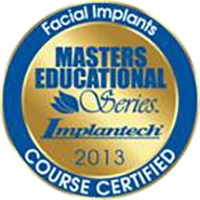Hip Dip correction and requests for larger, curvier hips is a fast-growing trend in the body implants world.
Dr Shahin Javaheri, a double board-certified plastic surgeon specializing in all types of body implants says, “The latest trend in my plastic surgery office is the customization of body implants to achieve curvier and shapelier body because off-the-shelf implants are not one size fits all.”
Hip dips refer to the inward curve on the sides just below the hip bone, and some individuals may feel self-conscious about them. Cosmetic procedures, such as fat transfer or fillers, have been used to enhance or reshape various body features, including the hips, but the popularity and trends in these procedures can vary depending on the severity of the dips.
The popularity of hip dip surgery has been growing, driven by various factors:
- Social Media Influence: Social media platforms, especially Instagram and TikTok, play a significant role in shaping beauty standards and influencing trends. Influencers and celebrities often showcase their bodies, including the results of cosmetic procedures, contributing to the popularity of surgeries like hip dip correction.
- Body Positivity and Self-Expression: While there’s a growing body positivity movement encouraging self-love and acceptance, some individuals still seek cosmetic procedures to enhance features they feel insecure about. Hip dip surgery is seen as a way for individuals to express themselves and achieve their desired body shape and curves.
- Advancements in Cosmetic Procedures: Advances in cosmetic surgery techniques and technologies have made procedures like fat transfer and fillers more accessible and safer. These advancements can contribute to the increasing popularity of surgeries targeting specific body areas, such as hip dips.
- Increased Awareness: As information becomes more accessible through the internet and social media, people are more aware of the available cosmetic procedures. This increased awareness may lead to more individuals considering and opting for hip dip surgery.
- Customization of Beauty: The trend toward individualized beauty standards has led to a rise in cosmetic procedures that allow individuals to customize their appearance based on personal preferences. Hip dip surgery fits into this trend by offering a way to tailor the body shape to one’s liking.
It’s important to note that trends in cosmetic surgery can change over time, and the factors contributing to the popularity of hip dip surgery may evolve. Additionally, individual motivations for undergoing such procedures can vary, and decisions should be made carefully, taking into consideration personal preferences, well-being, and consultation with qualified medical professionals. For the most current information, it’s recommended to consult recent sources or speak with healthcare professionals in the field.
There are various ways to address or enhance the appearance of hip dips, ranging from non-surgical to surgical options. Keep in mind that the popularity and availability of specific procedures may have evolved since then. It’s essential to consult with qualified medical professionals to explore the most suitable options based on individual circumstances. Here are some common approaches:
- Exercise and Strength Training:
- Targeted exercises can help strengthen and tone the muscles around the hips. Building muscle in the glutes and thighs may minimize the appearance of hip dips. Exercises like squats, lunges, and side leg lifts can be beneficial. Sometimes, despite exercise, it is difficult to achieve the desired results and that’s when patients opt for plastic surgery enhancement, says Dr Shahin Javaheri.
- Fat Transfer (Fat Grafting):
- This surgical procedure involves removing fat from one part of the body (usually through liposuction) and injecting it into the hips to create a smoother and fuller appearance. It’s a natural way to enhance the curves of the hips.
- Dermal Fillers:
- Injectable dermal fillers, such as hyaluronic acid-based products, can be used to add volume to specific areas, including the hips. This is a non-surgical option that provides temporary results. Dermal fillers can be costly and are a temporary solution, says Dr Shahin Javaheri. “This approach is ideal for patients who have slight dimples and modifications to improve upon.”
- Hip Implants:
- Surgical placement of implants is another option to enhance hip volume. This involves the insertion of silicone implants to create a more rounded and fuller hip shape. This is a more invasive procedure than fat transfer or fillers. “Implant option is best, and permanent when hips dip are more pronounced and or a patient requires larger and curvier shape,” says Dr Shahin Javaheri, a board-certified plastic surgeon in San Francisco, CA. He is a leading body implant specialist and expert in hip augmentation using custom implants and body implant surgeries.
- Sculptra Injections:
- Sculptra is an injectable treatment that stimulates the production of collagen, helping to add volume to the treated area over time. It is often used for facial rejuvenation but can also be applied to the hips for a subtle enhancement. This may be good for slight imperfections. “Not my favorite procedure because of short-term results and may not be precise, “ says Dr Shahin Javaheri.
- Compression Garments:
- While not a permanent solution, wearing compression garments or shapewear can temporarily smooth out the appearance of hip dips by redistributing and compressing the surrounding tissue.
- Body Contouring Procedures:
- Procedures such as liposuction or body contouring surgery can be considered to reshape and contour the overall body, potentially reducing the prominence of hip dips.
It’s crucial to note that surgical procedures come with potential risks and complications, and not everyone is a suitable candidate for these interventions. Consulting with a board-certified plastic surgeon is essential to determine the most appropriate approach based on individual goals, health, and anatomy. Additionally, trends and available options may have evolved, so seeking the latest information from reliable sources is recommended.
Not all of these procedures are viable or permanent. Also, fat grafting has a high rate of absorption, fillers are costly and also temporary.
Implants probably provide the best outcome; however, they can be associated with postoperative complications such as fluid accumulation (seroma), implant show, or implant movement.



